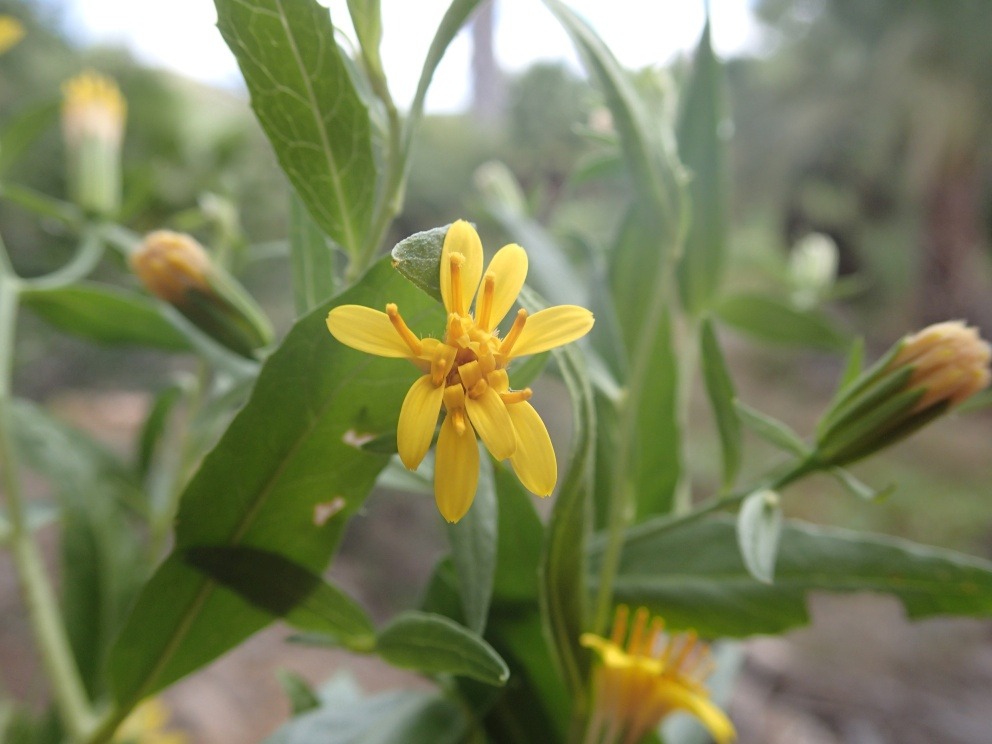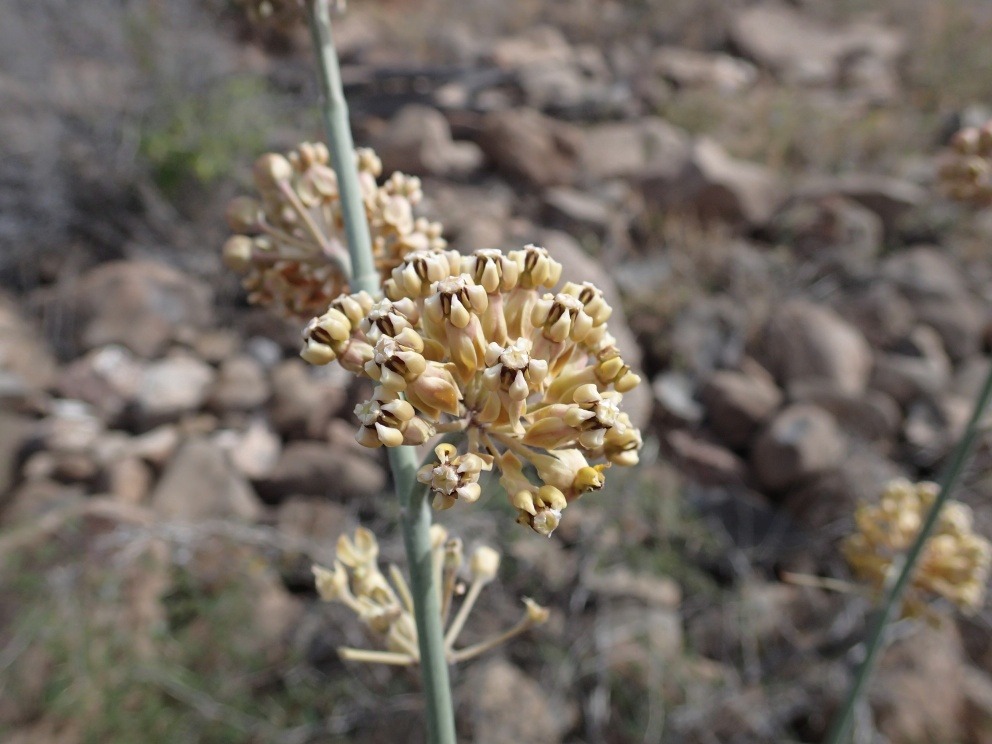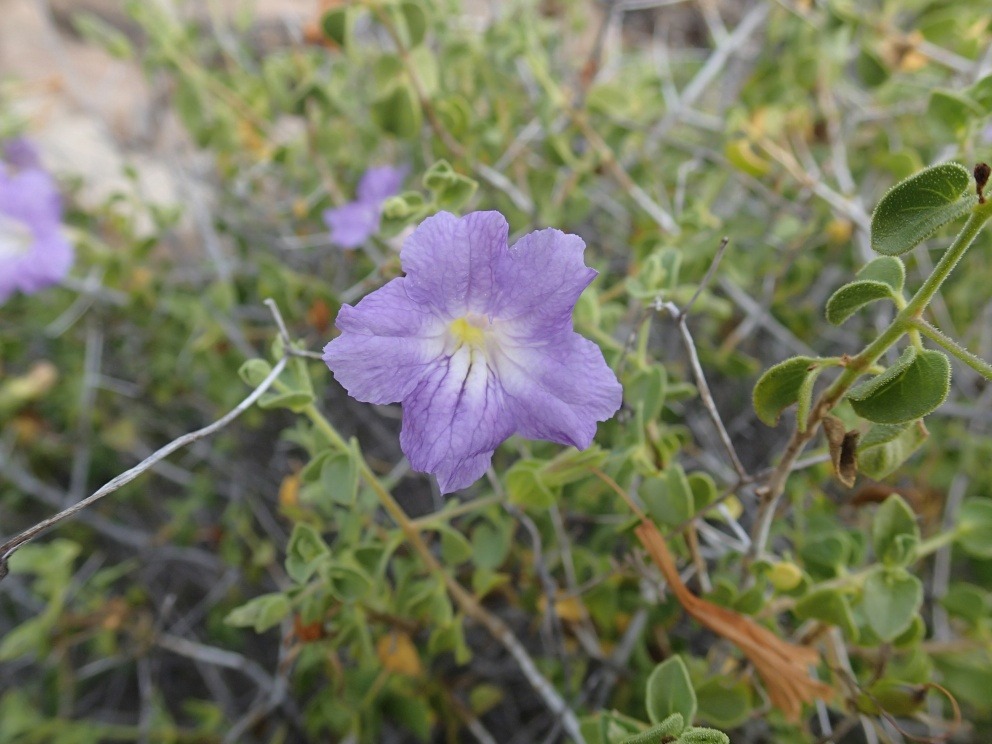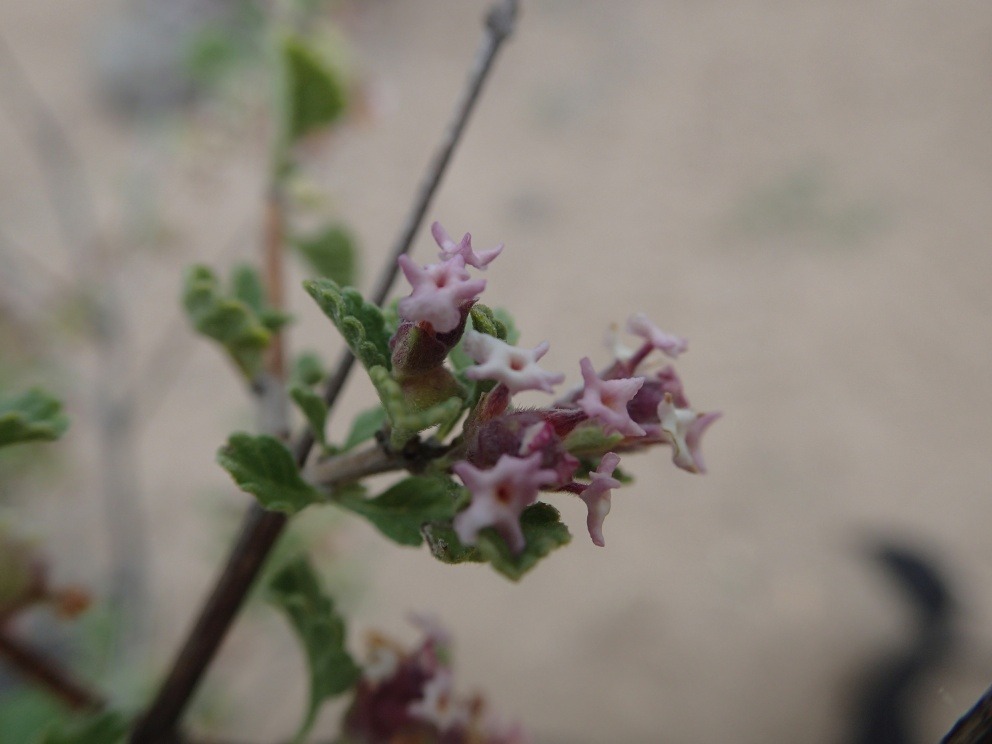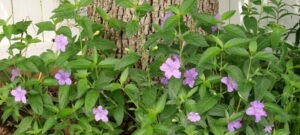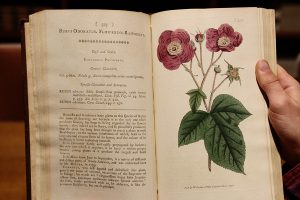This “Notes from the Field” post is from BRIT Biodiversity Explorer Dr. Sula Vanderplank
Riders: Trudi Angell, Leslie Pringle, Theodora “Teddi” Montes, Karen Brown, Polly “Polita” Parker, Marlene Jones, Steve Enright
Guides: “Chayo” Nazario Talamantes Cota, “Bule” Raúl de los Santos Martinez
**********************************************************************
La Mula Mil (The Mule 1000) is a group of women traveling from San Jose del Cabo to Tecate, Mexico — from the southern tip to the northern border of the Baja California Peninsula — all on mule-back.
“4 months, 3 women, 2 expeditions, 1000 miles in Mexico by mule.”
Beginning last November 3rd, they graciously allowed some of us to accompany stretches of their journey. On the original journey, 50 years ago, botanist Reid Moran traveled with them. Today I am the botanist, joining the team on some of the most remote stretches of their amazing expedition.
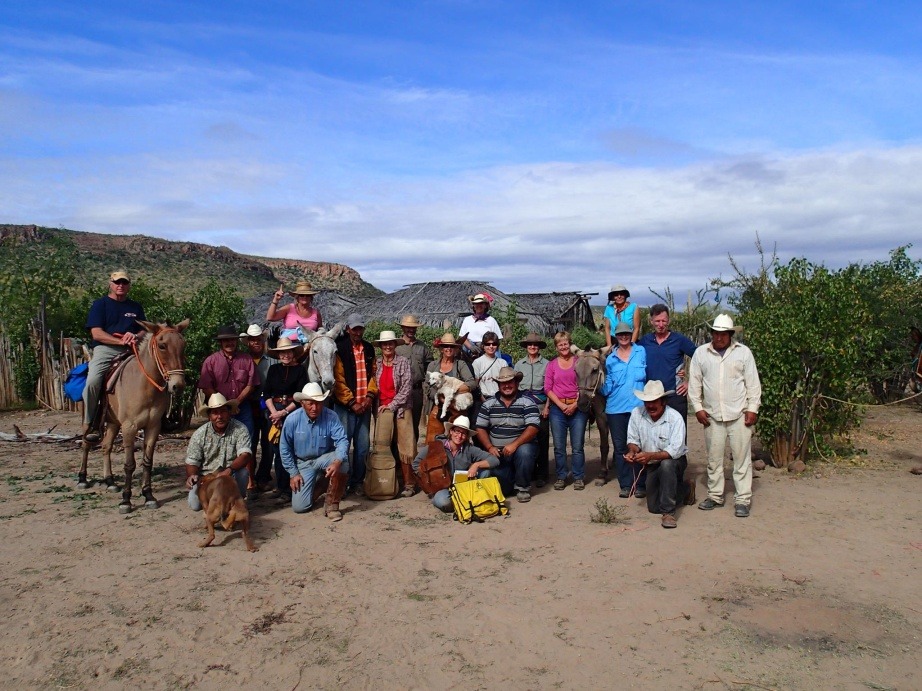
Arriving in Loreto, I took a cab into town and asked the driver if there would be dancing where I was going. “Oh, yes!” he assured me. I made my way up to Rancho Chula Vista with Drew from Saddling South (Trudi Angell’s eco-tourism business), and there we met up with the group and made our way to the Fiesta del Santo San Javier. This is a famous saints day in the region, and though I’d been told many times that it was an event not to be missed, I had no idea what to expect.
We arrived at dusk and had to walk the better part of a kilometer as parking was a nightmare. But when I finally crested the hill and got my first glance of the mission, it was glorious, beautifully illuminated in light against the dark night sky with a sea of people in front.
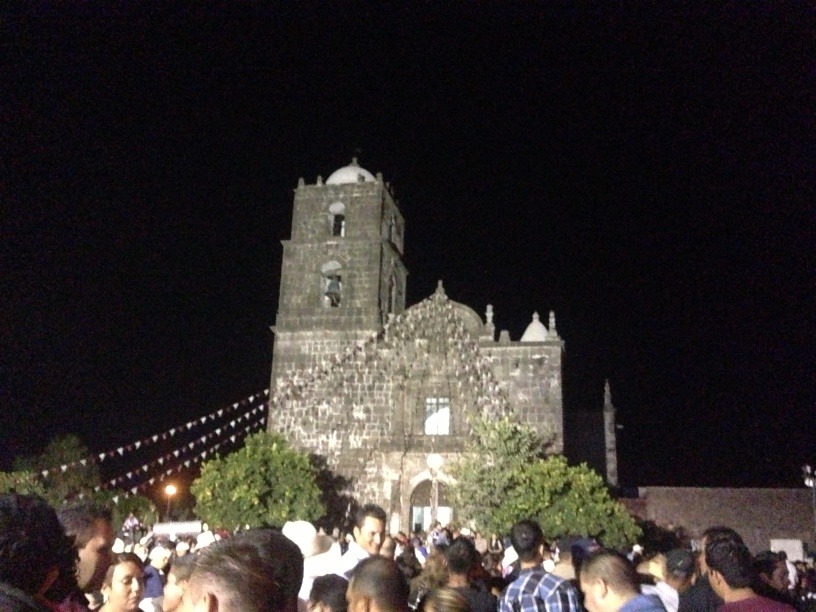
There were all sorts of stands selling various local wares. I treated myself to a new cowboy hat for the trip and particularly enjoyed a visit to the stand “Raices Vivas” or “Living Roots”, a non-profit organization that promotes traditional artesania and wares. They had two beautiful hand-made local saddles, tanned with the bark of the Palo Blanco (Lysiloma candida) and hand-carved with excruciating detail. One was being raffled, and for a moment I wished I had a pocket full of money to enter! There were also saddle miniatures, jewelry made from local plants, woods, and seeds, and a fabulous collection of hand-made knives, as well as other arts and crafts. Various tents with music and beer were scattered around. We finally found the perfect one, and our guides jumped into the band to sing, and we danced until the morning.
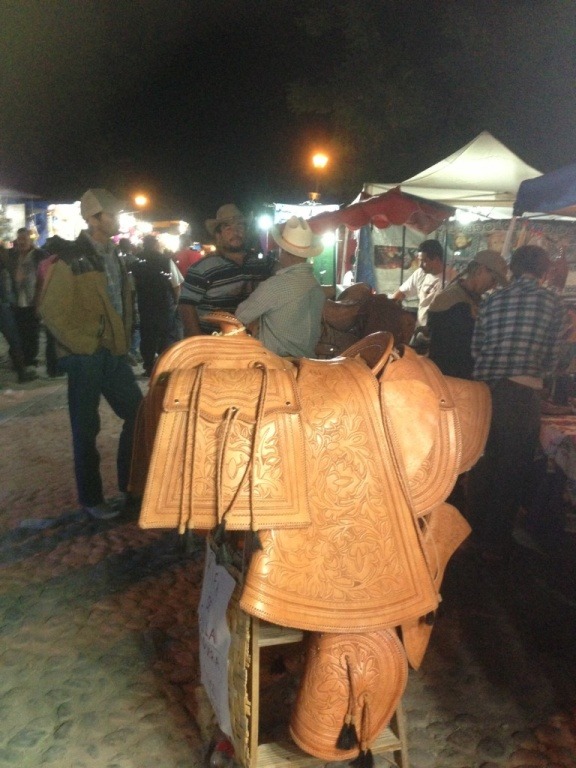
We stayed that night at Rancho Chula Vista, which was then the trail head for our adventure. The hospitality of Don Viti and family was impeccable, and we soon set out towards Rancho Santa Isabel, 21 people and 32 animals in tow!
In the morning as the animals were packed I reviewed plant lists and readied the press for our trip. I have to collect sparingly, as we don’t have enough animals to haul several presses. We rode via Santa Isabel to our campsite at Monte Alto. I was delighted to find so many plants in flower, especially in the arroyo. I pressed by headlamp while dinner was being prepared. The next morning we rose early, and I was humiliated to discover that (to everyone else’s amusement) I had been snoring… loudly!
We mounted the animals and headed west towards El Palmerito, soon reaching the Camino Real and following this for most of the day. (It starts in Loreto and runs north to Monterrey, California.) It was inspiring to think of all the other people that had passed along this same trail since 1697 when Jesuits built it over native trails to connect the missions. Along the way I was excited to see so many things in flower, including several species I had never seen before like some unusual members of the Acanthaceae and some legumes (bean family) with big pink flowers that were pretty amazing.
I asked our guides about useful and medicinal plants, and they explained that the Elephant Tree (Pachycormus discolor) can be used to make soap. Also Cardón (Pachycereus pringlei) can help stop bleeding in the case of deep wounds, Gobernadora (Larrea tridentata) is good for the stomach, and Garambullo (Lophocereus schottii) is good for broken bones as it makes a hard cast. Oh, the things you can learn when you only think to ask!
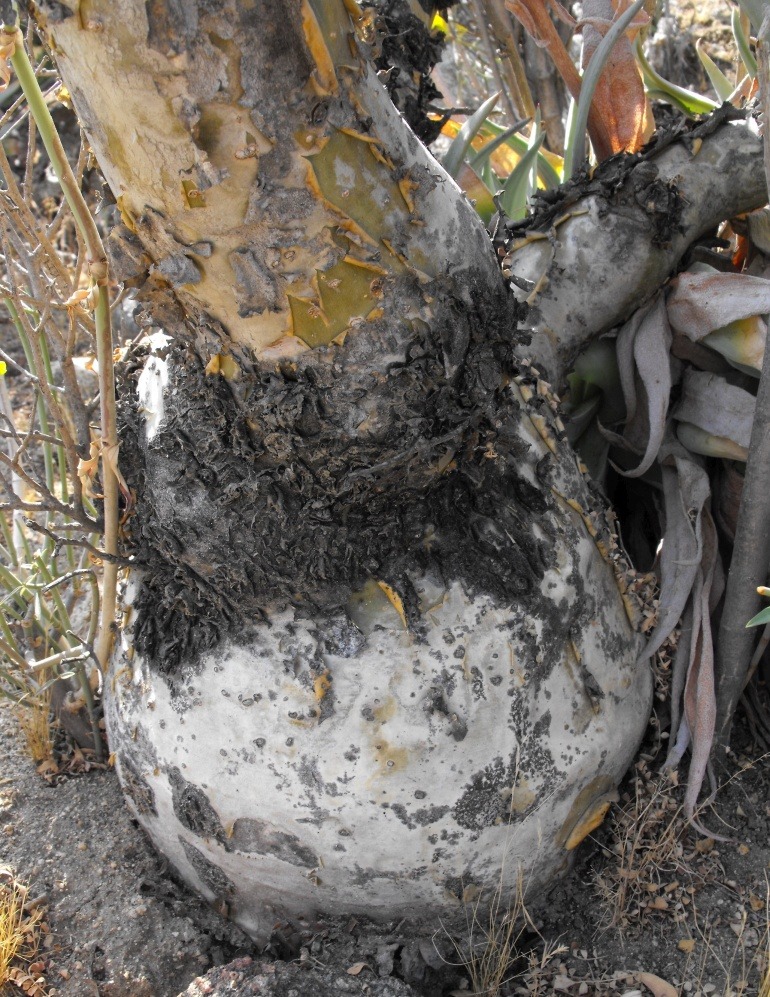

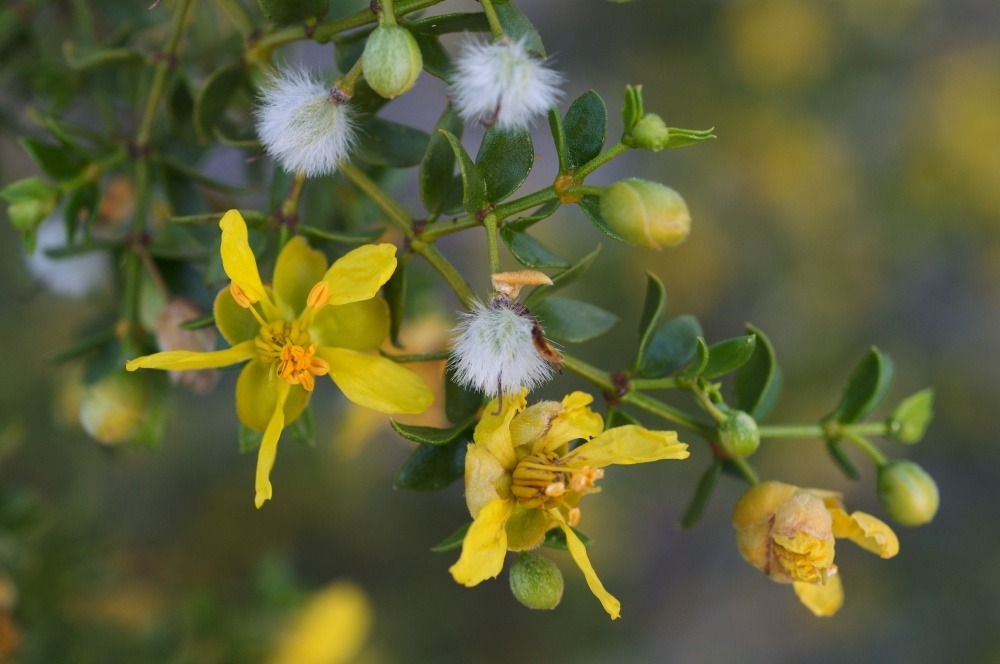
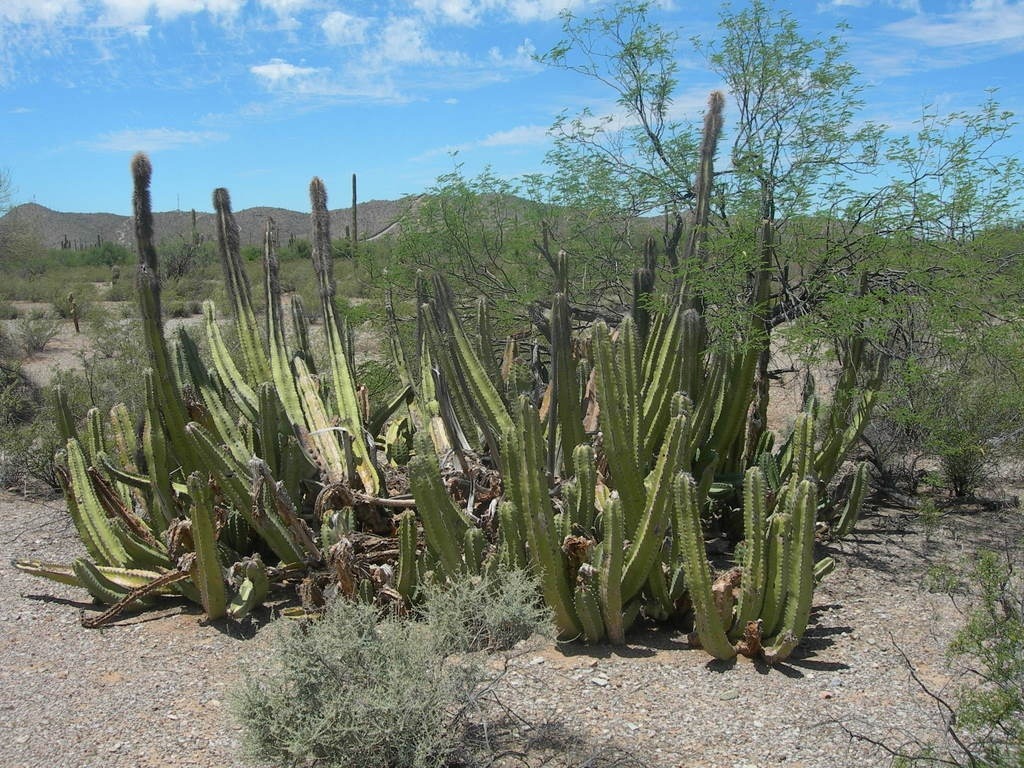
In the afternoon we arrived at Rancho Los Pilares, a stunningly beautiful water hole in the desert with steep brightly colored cliffs. Before it got dark I went to explore some caves in the cliffs and then took a swim in the water hole. It felt good to be clean! The singing of local cowboy songs around the campfire was chillingly beautiful as I drifted off to sleep.
I don’t recall what happened during the night, but I woke the next morning with one eye swollen shut. I’m told it was probably a spider-bite above the eye, but I had quite a startling appearance and even had some folks concerned that I’d been in a fight! They made me a tea of Wild Oregano (Lippia palmeri) which made me feel a lot better, although it didn’t seem to do much for my face. However, listening to ranch owner Don Salvador “Chivalo” Lucio Mesa talk about medicinal plants soon made me forget about my temporary deformity. As he showed me his plethora of dried herbs and roots, he soon had a large group of “students” listening intently. I tried to identify some of his dried plants for my own interests, and he very kindly went through my plant press with me giving the common names for many of my collections. I was sad to leave, having so enjoyed the connection, but I promised to return as soon as possible as we saddled up and headed up the mountain.
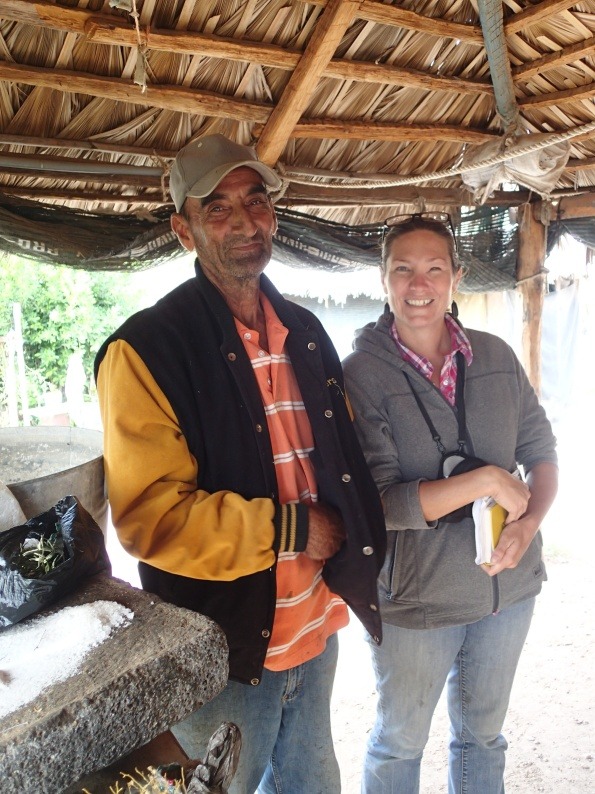
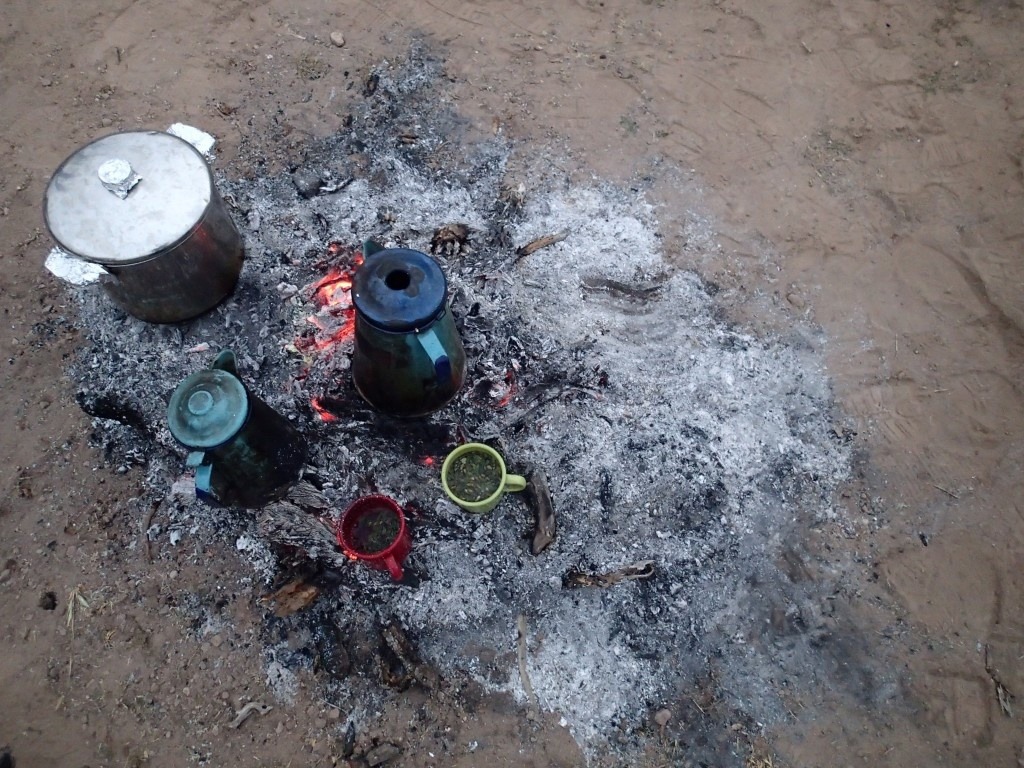
I traded out mules today, making for a comfier saddle but a more challenging ride. The habitat shifted distinctly at the top, and there were several plants we hadn’t seen previously. I collected as much as I could along the trail as we were now well away from any roads (and I quickly learned that I do need to tie the mule up every time I get down from the saddle!). I’m mostly collecting plants that aren’t on the checklist of specimens previously collected in the general region and also anything I didn’t recognize. The checklist was generated using Bajaflora.org, a shared database of specimens from the peninsula from various regional herbaria. Many beautiful new plants that I hadn’t seen before went into the press today, amongst them two species of Euphorbia, a beautiful pink morning glory, and various grasses. The ride was beautiful, and took us past a spectacular rock pile that was covered in petroglyphs. We were delighted to find that the rocks also “sing” or make ringing sounds when knocked with another rock.
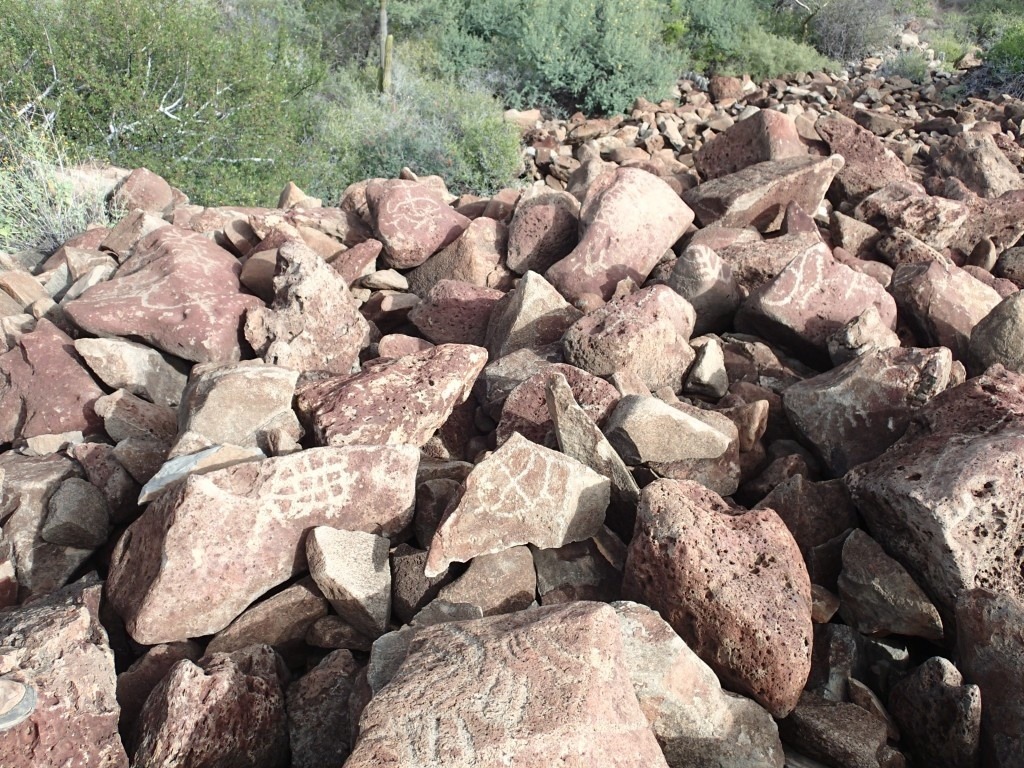
Today’s ride ended at another beautiful water hole with aquatic plants in flower. A highlight of my day was listening to our guide Chayo talk about some of the conservation success stories in his town Ejido San Jose de la Noria, like the creation of Natural Protected areas there and the protection of the wetlands and mangroves. It was inspiring and uplifting to hear his stories, and I was again reminded of how special so many of the people in this region are. Their commitment to conservation of biodiversity is incredible, and their love of their ranches, homelands, and landscapes is nothing short of awesome.

Looking back, I spent a considerable portion of this trip reflecting on how utterly inspirational the women around me were. I felt strengthened and encouraged by their interest in my work and motivated by their stories. It was quite an academic group – with doctors, mathematicians, teachers, and a genealogist. There’s something very special about this opportunity to be surrounded by women that show you how to follow your dreams and live in the same positive and appreciative way that they do.
The fearless leaders of this trip are truly amazing. Trudi makes everything look easy despite coordinating a million things with endless back up plans and riding her mule with both her guitar and her dog(!). Leslie is a specialist in living your dreams who knows how to make major life changes at the drop of a hat and enjoy every minute. Teddi is a secret scholar who has been taking DNA swabs from the ranchers we meet as she develops a geneology of the Murrell family. The other women on the trip do not fall short and have lived fascinating lives, the warm nurturing atmosphere giving us all a chance to share our stories and learn from one another. And as we passed by the mesa of Quiñi and Rancho Quiñi, and I thought of another inspiring woman, Annetta Carter, who collected plants on mule-back throughout this region from 1936 to 1986. I am perhaps the second person to collect plants here, and it seems particularly appropriate that I do so with a group of women on mule-back.
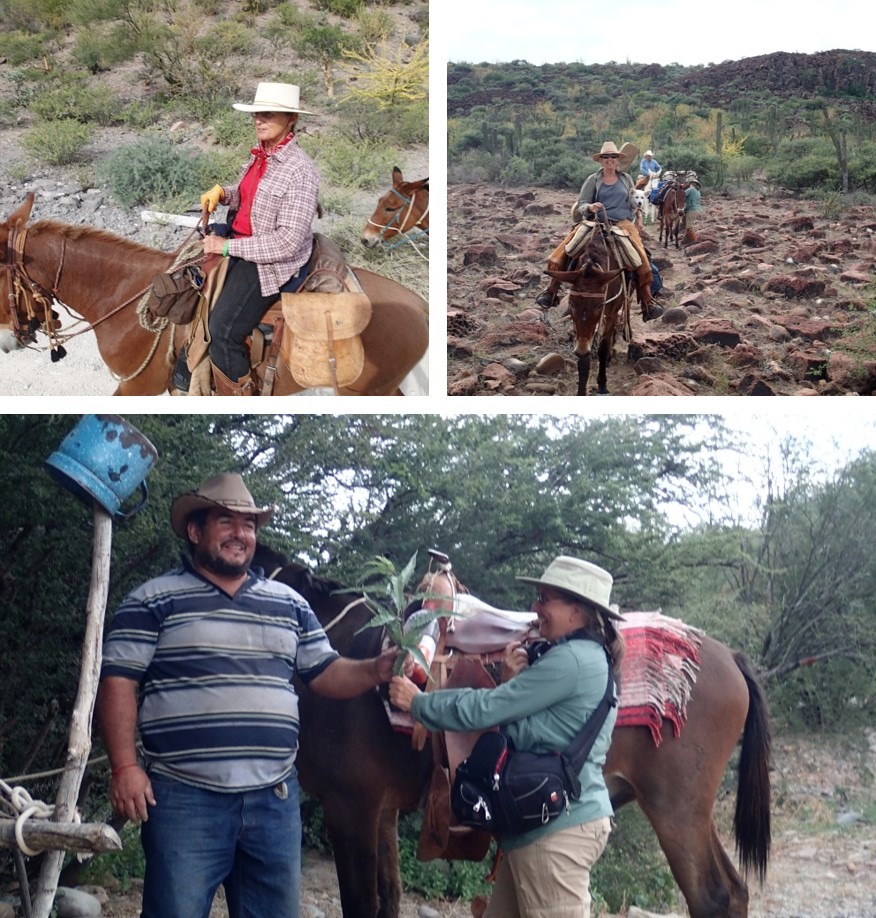
The next day was a long painful ride for me as one stirrup came loose and I couldn’t quite understand why I seemed to be leaning to one side all day. As such I had a very sore knee and ankle from the awkward positioning. Plant-wise, though, it was exciting to be so far from the beaten path, and there were carpets of colorful Bindweed (Ipomoea sp.) and some unusual finds like Justicia insolita. We ended at the mission town of Comondú, and riding into town we felt like something of a spectacle with many people coming out to watch our descent down the mountain. I wished I had a sign about how cool plants are!

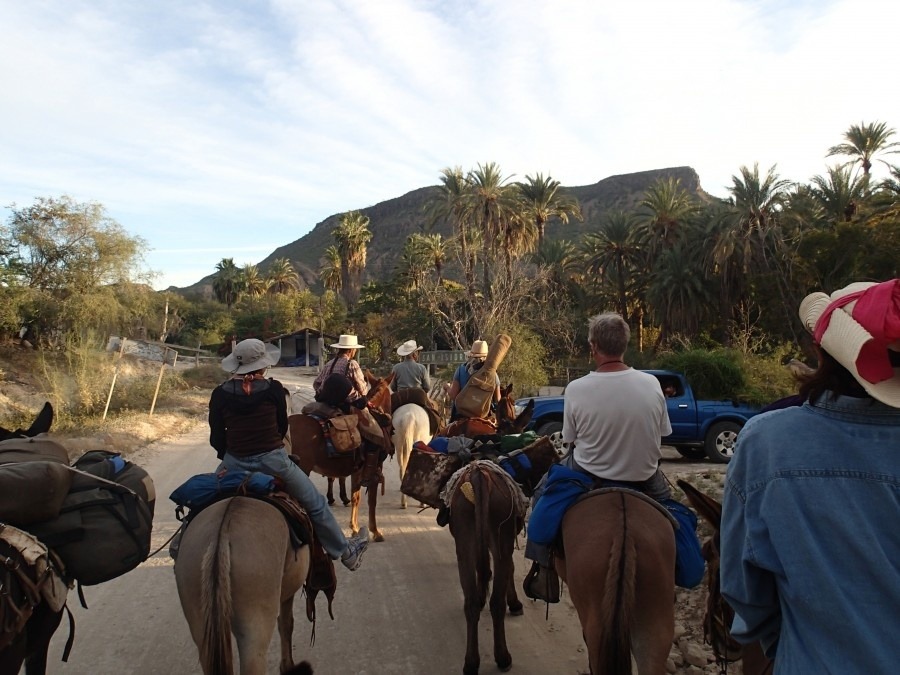
In the evening we had a delicious meal in the home of the Gomez family, with beans, cheese, tortillas, and homemade fruit preserves. Comondu (or Los Comondus) is a pair of twin oasis towns: San Miguel and San Jose. We had the pleasure of staying on a beautiful sugar-cane ranch that produces piloncillo (cones of brown cane sugar) in the traditional way. The beautiful stone ovens are smoke-stained from decades of use, and the cane grove was a fabulous place to collect plants! I felt like I was raiding a secret garden as I pulled up beautiful milkweeds and mallows from wet clearings between the towering sugarcane plants.
The ranch had a whole field of Yerba Mansa or Yerba del Manso (Anemopsis californica), one of the best-known medicinal plants of the region. The leaves are often used to wrap wounds and may be used to apply other medicines. Don Francisco Javier “Chamo” (brother of Chivalo) was kind enough to go through all the collected plants I had with me, telling me their local names and uses. For example, they use Yerba del Manso to reduce cholesterol.
As we rode towards El Pabellon in the afternoon, Trudi explained to me some of the most important species for firewood. The piloncillo production uses wood from the pitaya dulce cacti exclusively! It burns at the perfect temperature, leaving no coals. In contrast, for firewood, the ironwood is also very important for other purposes as it produces lots of excellent coals.

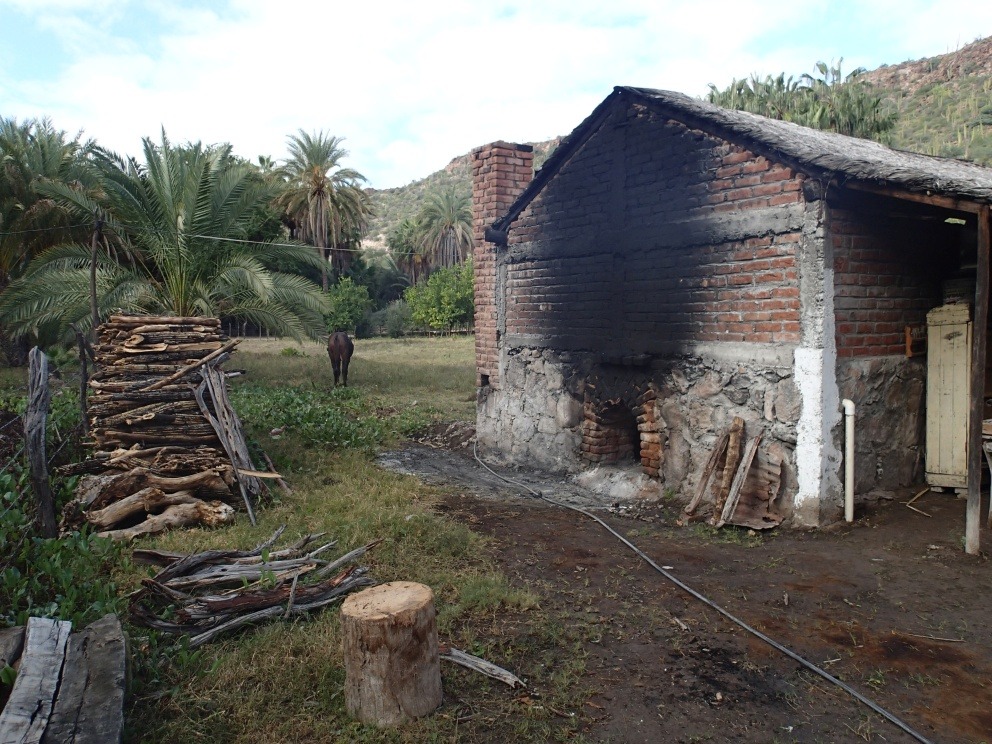
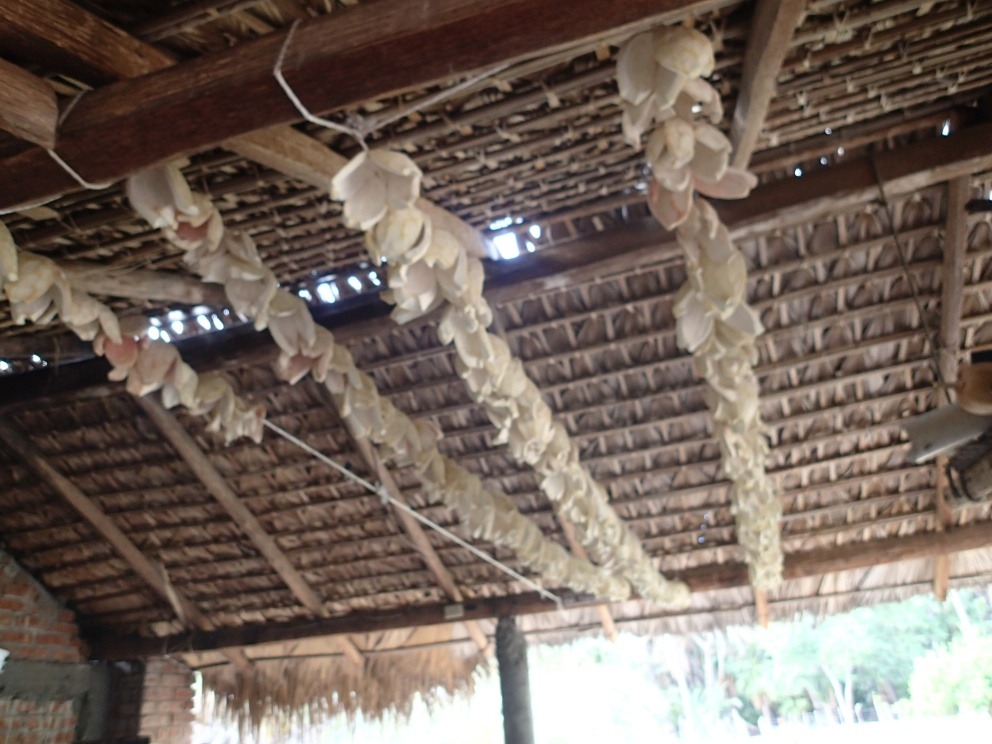

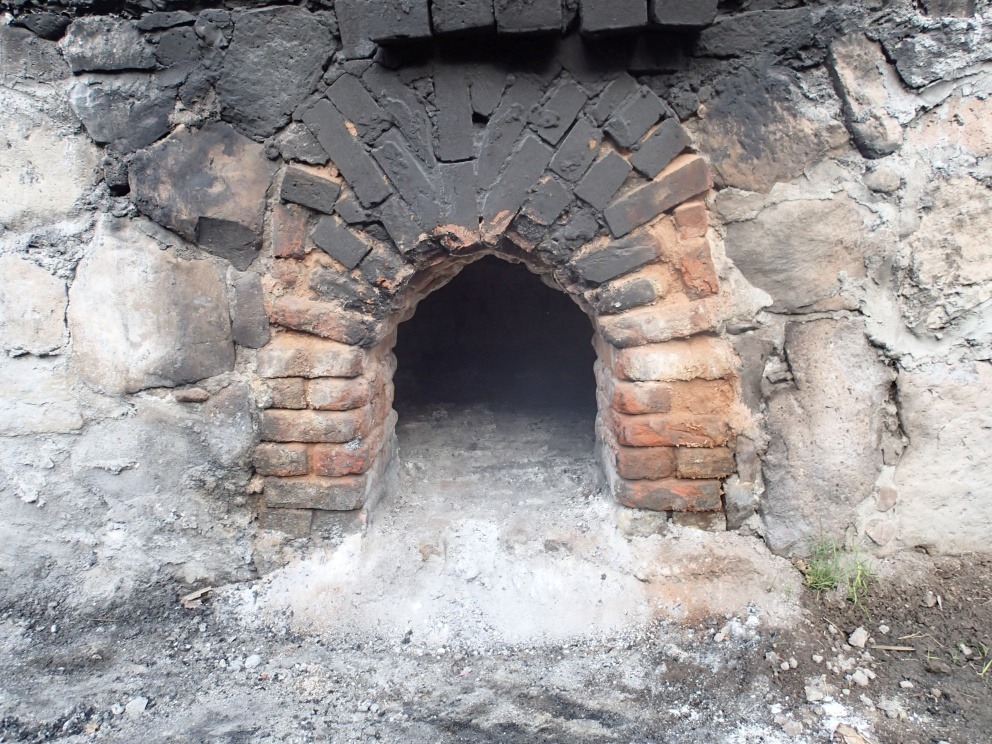
That night was cold, very cold, and those of us without tents were all up well before dawn trying to warm ourselves by the campfire. Our trip ended in the beautiful town of La Purissima, on the ranch of Delegado Raul Antonio Miranda Arce (“Timy”) who is also very knowledgeable about local plants. We were met by a film crew from Televisa who had come to cover the story of the Mula Mil [click here to view video in Spanish – our Dr. Vanderplank appears in the last few seconds with a baby goat!]. They were also there to film one of our traveling companions, Don Nacho Chiapa, who is a veterinarian and something of a local legend, traveling the paths and back roads of the peninsula almost year-round.
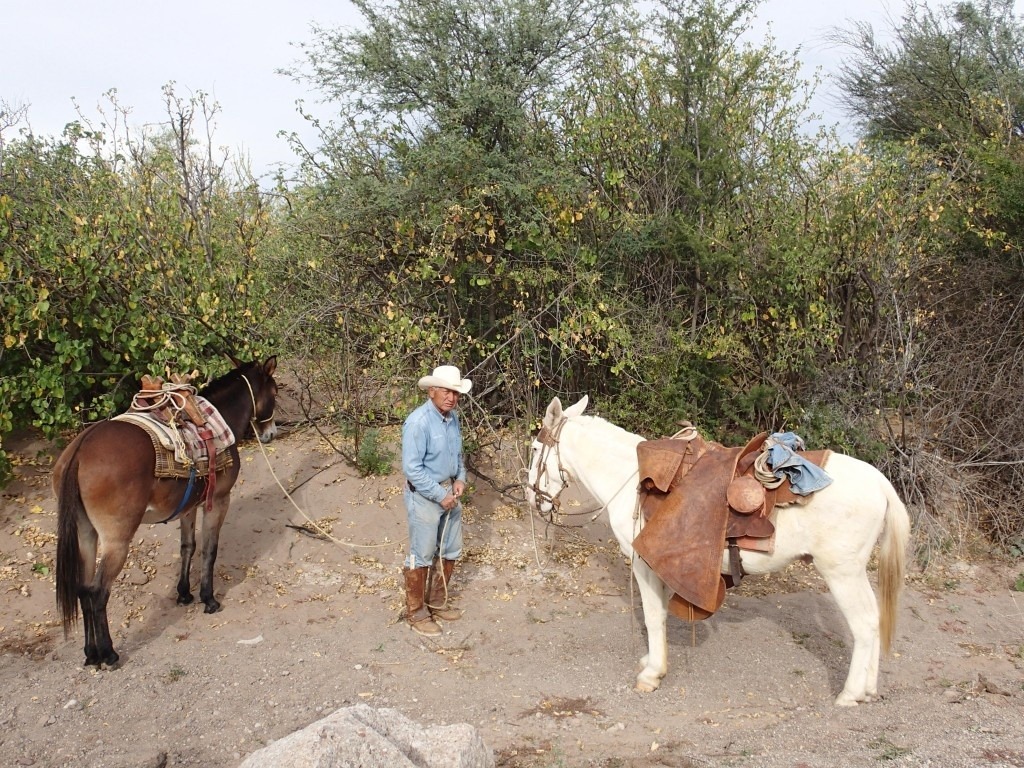
I hope to join the fabulous Mula Mil team again in late March, as they reach the last leg of their trip into the northern, Mediterranean-climate region and Mexico’s wine country (a perfect time to join up, yes?).
